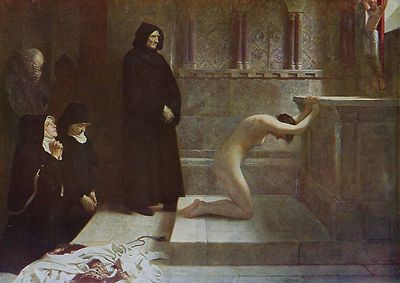Perspective

Perspective (from Latin perspicere, to see through) in the graphic arts, such as drawing, is an approximate representation, on a flat surface (such as paper), of an image as it is seen by the eye.
Perspective allows the viewer to visualize the depicted scene three-dimensionally, even when it is only two-dimensional. Photographs, film and rendered art always use perspective, as created by lenses that work similarly to the human eye.
Of the many types of perspective drawings, the most common categorizations of artificial perspective are one-, two- and three-point. The names of these categories refer to the number of vanishing points in the drawing. As a rule of thumb, if you consider space a cubic grid (a coordinate system of three axes x, y, z), two axes will be horizontally and one will be vertical. The vanishing points are the endpoints of these axes. Depending on your view, you can use all three vanishing points or you can simplify and use only two, one, or none points, and consider the other infinitely far away, resulting in parallel instead of converging lines.
Perspective is dependent on (and produces) a view or camera angle, i.e. the location of the viewer, or the camera, in relation to the depicted scene. The horizontal vanishing points are always at eye level (or camera level) from the floor. For example, in worm's eye view, the horizontal vanishing points will be at or near floor level. The vanishing point for vertical lines is either at the zenith or at the nadir.
Perspective in spanking art
Many spanking drawings ignore perspective, which works fairly well when there are only figures and no elaborate background. More realistic scenes however will either use correct or more or less incorrect or simplified perspectives. Rendered spanking art, like spanking photos, always has the correct perspective.
| This page may use content from Wikipedia. The original article was at Perspective (graphical). The list of authors can be seen in the page history. |
Notes
- ↑ Calderon Philip Hermogenes painting of St Elizabeth of Hungary's Great Act of RenunciationOne-point perspective (19th century). The vanishing point is in the middle of the drawing, just a little higher than the top of the altar. The vertical and one direction of horizontal lines are parallel.
External links
Chat rooms • What links here • Copyright info • Contact information • Category:Root